Investing in an industrial coal-fired boiler involves much more than acquiring hardware—it’s about securing a long-term, high-capacity thermal solution backed by dependable technology, regulatory compliance, and trustworthy after-sales support. A poor manufacturer choice can lead to downtime, safety issues, excessive emissions, and high maintenance costs. Selecting the right partner ensures your system is engineered for durability, efficiency, and regional standards.
To choose a reliable industrial coal-fired boiler manufacturer, assess their experience with coal combustion technologies, manufacturing standards (ASME, ISO, CE), in-house engineering capabilities, global installation references, compliance with emissions regulations, and their ability to provide long-term technical support. Look for manufacturers who offer scalable designs, robust ash and slag handling systems, and proven performance in similar industrial sectors. Request documentation, performance guarantees, and customer testimonials before signing any agreement.
Here’s a structured approach to selecting the right manufacturing partner for your coal-fired boiler system.
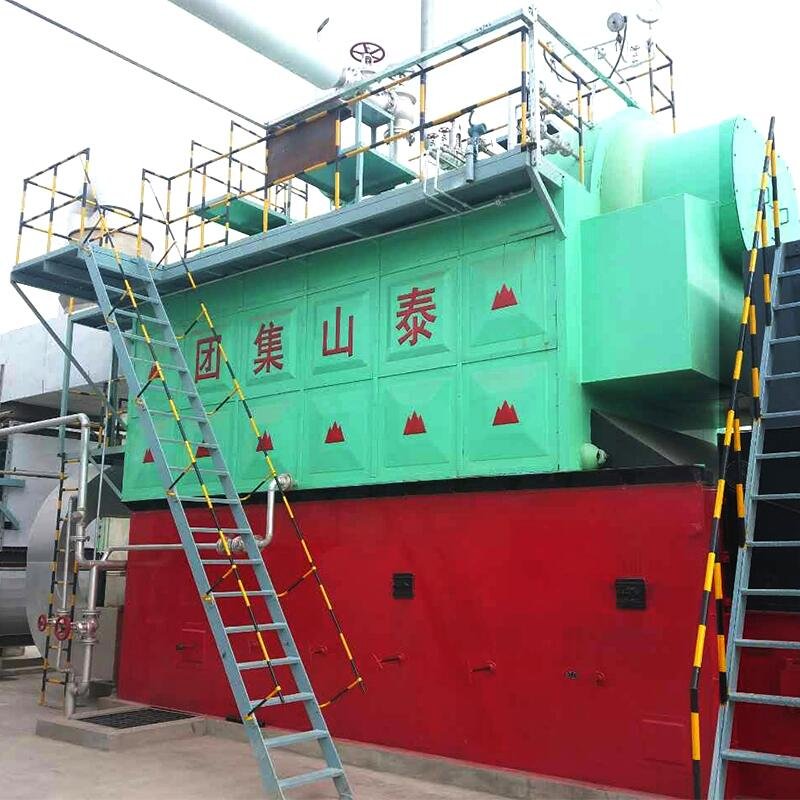
What Technical Competencies Should a Coal-Fired Boiler Manufacturer Demonstrate?
Selecting the right coal-fired boiler manufacturer is critical for operational efficiency, emissions compliance, and long-term reliability. Yet the market is filled with vendors whose capabilities may vary drastically—posing a major risk to power plants, manufacturing operations, and thermal utilities. Without verifying technical competencies, buyers may face suboptimal performance, high maintenance costs, or even safety issues. In this article, we outline the essential technical skills and engineering qualifications that any reputable coal-fired boiler manufacturer must demonstrate to ensure optimal project outcomes.
A competent coal-fired boiler manufacturer must demonstrate technical proficiencies in thermal design engineering, combustion optimization, pressure part fabrication, metallurgical selection, control system integration, and emissions reduction technologies. In addition, expertise in CFD simulation, ASME/EN code compliance, welding qualification procedures (WPS/PQR), and turnkey EPC execution is essential.
If you’re planning to procure a coal-fired boiler, verifying a manufacturer’s core technical competencies should be your first step. Here’s what to look for.
Coal-fired boiler manufacturers do not need to follow any international standards.False
Manufacturers must adhere to international pressure vessel standards like ASME, EN, or ISO to ensure safety, quality, and performance.
🔧 Core Thermal Engineering Capabilities
| Competency | Description | Why It Matters |
|---|---|---|
| Heat Transfer Design | Accurate calculation of radiant & convective heating surfaces | Ensures efficiency and fuel economy |
| Furnace & Steam Drum Sizing | Correct sizing for combustion and steam separation | Avoids carryover, promotes steam purity |
| Combustion Calculations | Fuel-to-air ratios, excess air, heat release rate | Maximizes thermal output, reduces unburnt carbon |
| CFD Analysis | Computational Fluid Dynamics for flame shape, flow, NOx prediction | Optimizes combustion and emissions |
Manufacturers must provide detailed thermal design reports during bidding, including furnace geometry, gas path velocities, and tube bundle layout. 🔍 Without these, performance guarantees are meaningless.
🧪 Material Science & Metallurgical Proficiency
The extreme temperatures and corrosive gases in coal boilers demand advanced metallurgy:
| Area | Key Focus | Typical Materials |
|---|---|---|
| Pressure Parts | Strength, creep resistance | SA213-T22, SA335-P91 |
| Non-Pressure Parts | Ash handling, ducts | ASTM A36, SS304 |
| Boiler Tubes | Corrosion resistance, erosion durability | Alloy 625, Inconel |
| Welding Consumables | Compatibility, hardness match | E9018-B9, ER90S-B3 |
Manufacturers must have in-house or certified labs for NDT (RT, UT, PT, MT) and mechanical testing, along with WPS/PQR procedures approved by recognized authorities.
🛠️ Manufacturing & Fabrication Excellence
| Requirement | Description |
|---|---|
| Plate rolling and bending | For steam drums, membrane walls |
| SAW Welding Lines | Submerged arc welding for thick shell sections |
| Hydrostatic Test Facilities | Full-pressure tests ≥ 1.5x design pressure |
| Code Stamp Capability | ASME “S”/“U”/“PP” or EN 12952/12953 certification |
| Quality Management System | ISO 9001:2015 certification, traceability records |
Boiler shells, headers, tubes, and supports must be fabricated in compliance with project-specific codes and witnessed by third-party inspection agencies (TPIA).
🔍 Emissions Control & Combustion Tuning
With coal combustion facing global environmental scrutiny, emissions mitigation is non-negotiable:
| Technology | Role | Typical Target |
|---|---|---|
| Low-NOx Burners | Reduces NOx by controlling flame temperature | <150 ppm |
| Overfire Air (OFA) | Improves combustion staging | Enhanced burnout |
| SCR/ SNCR Systems | Post-combustion NOx control | Up to 90% NOx removal |
| Electrostatic Precipitator (ESP) | Captures fly ash particulates | ≤30 mg/Nm³ |
| Flue Gas Desulfurization (FGD) | SO₂ control | >95% removal |
A competent manufacturer integrates these technologies with the Distributed Control System (DCS) and provides validated test data.
⚙️ Control & Instrumentation Integration
Advanced control systems are vital for safe, efficient, and automated boiler operation:
| Feature | Description |
|---|---|
| PLC/DCS Control | Real-time automation of fuel feed, air, steam |
| Safety Interlocks | Prevents furnace explosion, dry-firing |
| Performance Monitoring | Load curves, efficiency, fault alarms |
| Remote Diagnostics | Data logging, cloud integration, trend analysis |
Manufacturers should support MODBUS, PROFIBUS, or Ethernet/IP protocols for seamless plant-wide integration.
📋 EPC Turnkey Capabilities
Many clients prefer single-source project delivery via Engineering, Procurement & Construction (EPC):
| EPC Element | Manufacturer Responsibility |
|---|---|
| Boiler Design & Supply | Custom-engineered, site-specific design |
| Balance of Plant (BOP) | Pumps, ID/FD fans, chimneys, water treatment |
| Installation Supervision | Erection, welding, insulation, refractory |
| Commissioning | First fire, steam blowing, tuning |
| Performance Guarantee | Efficiency, emissions, load response verified |
Only the combustion chamber matters in a coal-fired boiler project; EPC and BOP are secondary.False
EPC scope—including auxiliaries and balance of plant systems—is critical to overall boiler performance, safety, and compliance.
🏭 Reference Projects & Industry Experience
Technical credentials must be backed by experience. Always ask:
How many coal-fired boilers ≥10 TPH or ≥10 MW output have they delivered?
Any supercritical or ultra-supercritical design references?
What is the uptime record for their systems in the past 5 years?
Do they have repeat clients in utilities, cement, textile, sugar, or steel?
Request client testimonials, third-party inspection reports, and in-service performance data.
Summary
The technical competencies of a coal-fired boiler manufacturer span a wide range—from advanced thermal design and metallurgy to emissions compliance and control system integration. Selecting a vendor with these qualifications ensures not just compliance, but optimal performance, safety, and long-term return on investment. Before choosing a supplier, always demand documentation of design methods, certifications, test reports, and real-world project experience. The right technical partner doesn’t just deliver a boiler—they deliver a solution.
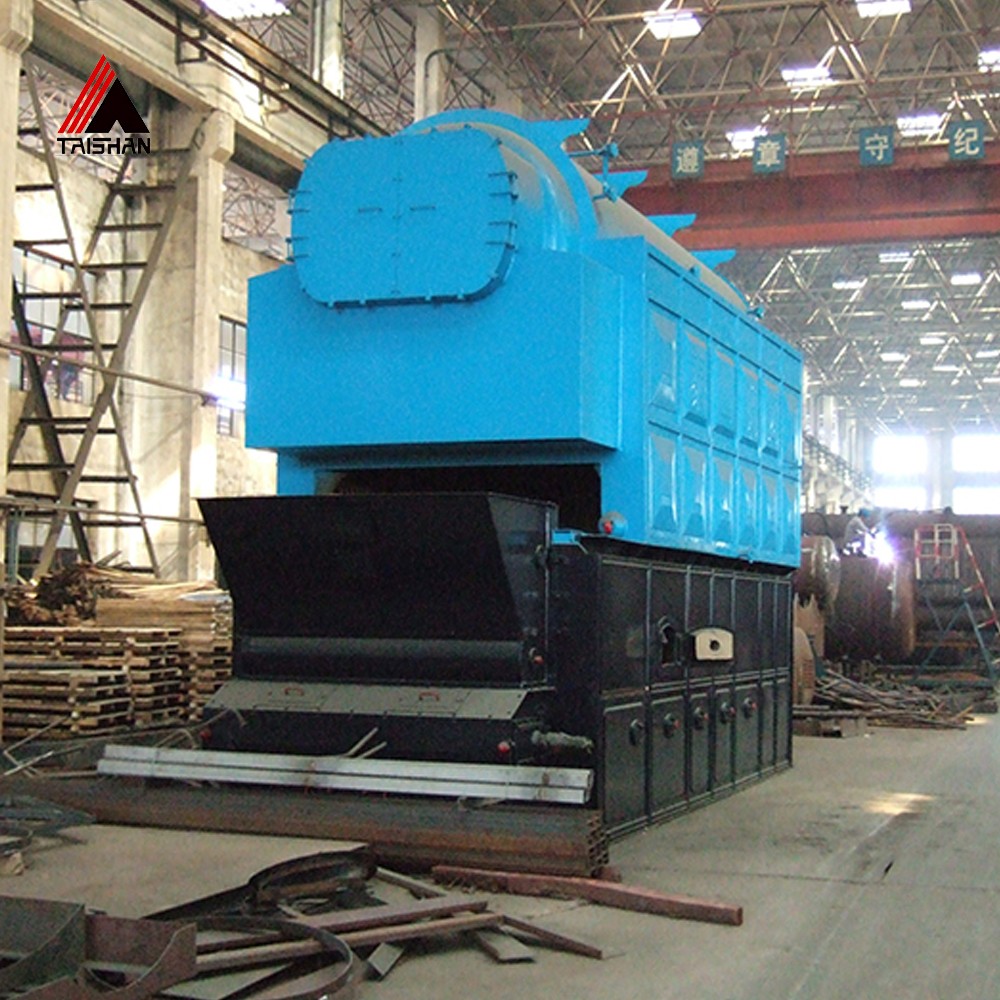
Why Are International Certifications (ASME, ISO, CE) Essential for Quality and Safety Assurance?
In the realm of industrial coal-fired boiler manufacturing, the line between operational reliability and catastrophic failure often lies in the rigor of quality and safety standards. Without internationally recognized certifications such as ASME, ISO, or CE, equipment may lack the engineering scrutiny, quality control, and documentation required to meet today’s stringent industrial demands. 🔍 Non-certified equipment not only poses safety risks but can also lead to legal non-compliance, reduced efficiency, and shortened boiler lifespan. This article unpacks why these certifications are indispensable for buyers, engineers, and project owners seeking durable, compliant, and globally recognized boiler solutions.
International certifications such as ASME (American Society of Mechanical Engineers), ISO (International Organization for Standardization), and CE (Conformité Européenne) are essential for coal-fired boiler manufacturers because they verify design integrity, material traceability, welding qualifications, inspection protocols, and safety performance. These certifications ensure that industrial boilers meet international benchmarks for pressure vessel safety, environmental compliance, and manufacturing consistency—making them legally acceptable and technically reliable across global markets.
Let’s explore how these standards apply to coal-fired boilers and what documentation and systems manufacturers must implement to earn them.
CE certification is only for electrical appliances and does not apply to industrial boilers.False
CE certification applies to pressure equipment, including industrial coal-fired boilers, under the EU Pressure Equipment Directive (PED 2014/68/EU).
ASME Certification 🔍
The ASME Boiler and Pressure Vessel Code (BPVC) is the global benchmark for pressure equipment. For coal-fired boilers, the relevant sections include:
| ASME Code Section | Focus Area |
|---|---|
| Section I | Power Boilers |
| Section II | Materials |
| Section V | Nondestructive Examination |
| Section VIII | Pressure Vessels |
| Section IX | Welding & Brazing Qualifications |
To be ASME certified, manufacturers must:
Maintain WPS/PQR/WQTR documentation
Conduct radiographic, ultrasonic, magnetic particle, and liquid penetrant tests
Apply hydrostatic testing at 1.5x design pressure
Use code-stamped materials with mill test certificates
Pass periodic audits by ASME Authorized Inspectors
For customers, this ensures that the steam drum, furnace walls, superheaters, and economizers are designed, built, and tested for high-temperature, high-pressure operation.
ISO Certification
The ISO 9001:2015 standard focuses on Quality Management Systems (QMS). For coal-fired boiler manufacturers, ISO certification ensures:
| Quality Metric | ISO Requirement |
|---|---|
| Document control | Revision history, version traceability |
| Supplier evaluation | Approved vendor list, audits |
| Customer satisfaction | Complaint handling, service KPIs |
| Internal audits | Planned frequency, non-conformance tracking |
| Calibration control | Instruments used in inspection are verified |
🔍 ISO 14001 (Environmental Management) and ISO 45001 (Occupational Health & Safety) are also relevant for ensuring sustainable and safe operations in boiler fabrication workshops.
CE Certification (Europe)
The CE Mark is mandatory for pressure equipment entering the EU market, governed by the Pressure Equipment Directive (PED) 2014/68/EU.
| Certification Element | PED Requirement |
|---|---|
| Conformity Assessment | Notified Body involvement (e.g., TÜV, Lloyd’s) |
| Design Review | Risk analysis, failure modes |
| Material Qualification | EN standards compliance |
| Final Inspection | Witnessed hydro tests, data book submission |
| Technical File | Must be retained for 10+ years |
| Declaration of Conformity | Manufacturer’s legal attestation |
A CE-marked coal boiler can be legally sold and operated in Europe, giving international buyers legal certainty.
🔍 Risk Management Through Certification
| Risk Area | How Certification Mitigates It |
|---|---|
| Weld failure | ASME IX weld qualification, NDT |
| Pressure rupture | ASME Section I design rules, CE hydrotesting |
| Environmental fines | ISO 14001 ensures compliance with local laws |
| Import/export delays | CE mark fast-tracks customs clearance |
| Operational downtime | ISO QMS enforces preventive maintenance standards |
Boilers without ASME or CE certification can still legally operate in the EU or U.S.False
National laws mandate ASME compliance in the U.S. and CE compliance in the EU for pressure equipment above certain thresholds. Non-certified boilers are illegal in most industrial applications.
Manufacturer’s Responsibilities for Certification
| Process | Action Required |
|---|---|
| Design | Stress calculation, FEA, material selection |
| Procurement | Traceable, certified components |
| Fabrication | Certified welders, QA oversight |
| Inspection | Third-party NDT, FAT/SAT |
| Documentation | ITP, data book, calibration logs |
| Audit Readiness | Respond to NCs, maintain logs, demonstrate continuous improvement |
For EPC clients or boiler purchasers, this means peace of mind and risk mitigation over decades of operation.
Project Qualification Example
| Project Type | Certification Required |
|---|---|
| Coal-fired boiler for steel plant (India export) | ASME “S”, ISO 9001 |
| Biomass boiler for Europe | CE (PED), ISO 14001 |
| Power station boiler for USA | ASME I, IX, NPT, ISO 45001 |
| Cement kiln boiler retrofit | ASME U, CE (for EU supply), local jurisdiction stamps |
Summary
In the high-stakes world of industrial coal-fired boiler projects, international certifications like ASME, ISO, and CE are not optional—they are the foundation of technical credibility and legal operation. These certifications demonstrate a manufacturer’s commitment to precision engineering, safety, quality, and regulatory compliance. For buyers, engineers, and project developers, choosing a certified manufacturer ensures fewer risks, better performance, and compliance across borders. Before investing in any boiler system, demand the documents that prove your supplier is built to international standards.
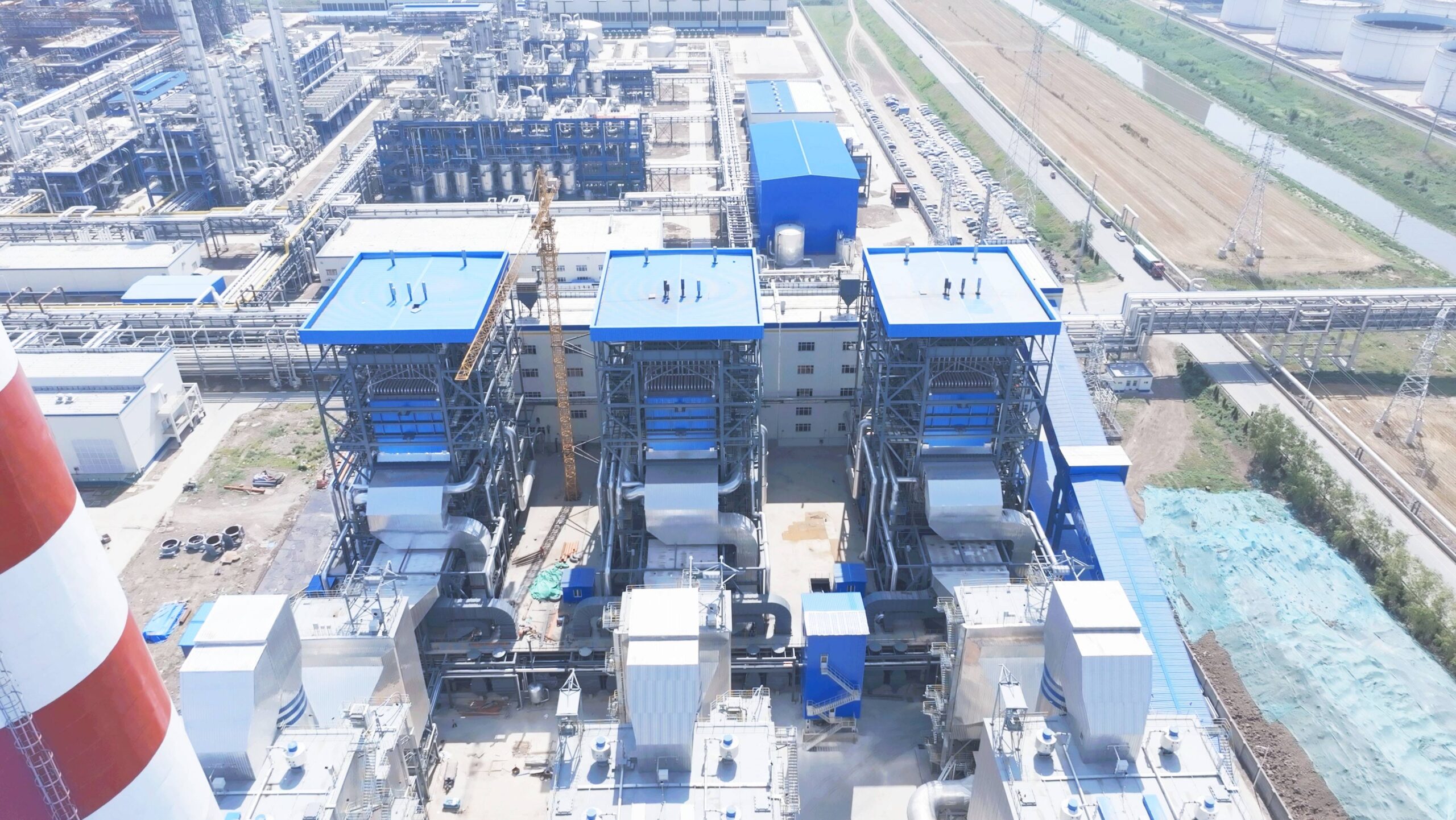
How Do Regional Emissions Standards Influence Manufacturer Selection?
As environmental regulations tighten worldwide, regional emissions standards have become a decisive factor in selecting industrial coal-fired boiler manufacturers. Failure to comply with local emissions limits can lead to project delays, costly retrofits, fines, or even shutdowns. 🔍 A technically advanced boiler may still be rejected if the manufacturer cannot meet jurisdiction-specific standards for pollutants like NOx, SO₂, and particulate matter. This article examines how regional environmental laws shape purchasing decisions and what capabilities manufacturers must demonstrate to be considered compliant and competitive.
Regional emissions standards directly influence manufacturer selection for coal-fired boilers by defining the allowable limits for pollutants such as SO₂, NOx, CO, PM, and Hg. Manufacturers must offer proven emissions control technologies (e.g., low-NOx burners, FGD systems, ESPs), compliance track records, and documentation that aligns with local regulatory frameworks such as the U.S. EPA NSPS, EU IED, China’s GB13223, and India’s CPCB norms. Only vendors that can engineer systems to meet these standards are viable partners.
Whether you’re building in Texas, Germany, or Gujarat, choosing a manufacturer with region-specific emissions expertise is essential for project approval and long-term operability.
All industrial coal-fired boilers are subject to the same global emissions limits.False
Emissions standards vary significantly across regions and are set by national or local agencies, not globally standardized.
🔍 Examples of Regional Emissions Standards for Coal Boilers
| Region | Regulatory Body | NOx Limit (mg/Nm³) | SO₂ Limit (mg/Nm³) | PM Limit (mg/Nm³) |
|---|---|---|---|---|
| USA | EPA NSPS (Subpart D & Da) | 117–200 | 130–160 | 23 |
| EU | Industrial Emissions Directive (IED 2010/75/EU) | 150–200 | 150–200 | 20 |
| China | GB 13223-2011 / 2025 Update | 100 | 100 | 10 |
| India | CPCB 2015/2022 norms | 100 | 100 | 30 |
| Australia | NEPM + state policies | ~200 | ~400 | 50 |
Each standard includes additional provisions on measurement methods, continuous emissions monitoring (CEMS), and permissible daily or hourly averaging.
How Emissions Standards Shape Manufacturer Requirements
| Regulatory Driver | Manufacturer Capability Required |
|---|---|
| Low NOx limits | Low-NOx burner design, flue gas recirculation (FGR), overfire air (OFA), staged combustion |
| Low SO₂ thresholds | Flue Gas Desulfurization (FGD) systems—wet, dry, semi-dry |
| Fine PM control | Electrostatic Precipitators (ESP), Fabric Filters (Baghouse) |
| Mercury & VOCs | Activated carbon injection, sorbent handling systems |
| Continuous Monitoring | CEMS integration, data logging, protocol compliance |
A compliant manufacturer must integrate these solutions into the boiler’s core design—not add them as afterthoughts. Custom emissions modeling and guarantee documents are typically required in the bid stage.
Manufacturer Selection Matrix Based on Emissions Expertise
| Vendor Competency | Essential in Region(s) | Evaluation Method |
|---|---|---|
| Past compliance with CPCB India | India, Bangladesh | Project references, inspection reports |
| Integrated FGD design | China, USA, EU | Tech proposal, SO₂ removal guarantee |
| U.S. EPA NSPS knowledge | North America | Documented emissions testing |
| EN 303/IED compliance | Europe, Middle East | CE documentation, BREF familiarity |
| Stack emissions simulation (CFD) | All regions | Detailed engineering submittal |
Choose vendors that have delivered successful EIA-approved projects in your jurisdiction. Request real-world test data, not just design specs.
🔍 Emissions Control System Integration
| Control System | Emission Target | Integration Point |
|---|---|---|
| Low-NOx Burners | NOx | Furnace/combustion system |
| Overfire Air (OFA) | NOx + CO | Upper furnace |
| Wet FGD | SO₂ | Post-combustion flue gas |
| Dry FGD (spray dryer) | SO₂ (lower capex) | Smaller units |
| ESP | Particulate Matter | After economizer |
| Baghouse | Fine PM + Hg | Fine filtration stage |
Only manufacturers who co-engineer the mechanical, chemical, and control systems of these units can deliver integrated compliance solutions—not just “equipment supply.”
Real-World Case Study: EU IED-Compliant Coal Boiler
A 65 TPH coal-fired boiler installed in Central Europe needed to meet:
NOx < 180 mg/Nm³
SO₂ < 150 mg/Nm³
PM < 20 mg/Nm³
The selected manufacturer integrated:
Low-NOx tangential burners with OFA
Semi-dry lime-based FGD
ESP with 99.7% collection efficiency
Third-party emissions testing by TÜV confirmed full compliance. Vendor provided CE certification and a 10-year emissions warranty.
🔍 Submission Documents for Emissions Compliance
To demonstrate capability, manufacturers must submit:
Detailed emissions design calculations
CFD simulations for burner/combustion tuning
CEMS integration diagrams and calibration specs
Proven emissions test reports (3rd-party verified)
Component layout and utility consumption charts (FGD, ESP)
Emissions performance guarantee with penalty clauses
Manufacturers can simply quote their boiler output without emissions modeling to secure international projects.False
Without emissions modeling and documentation, manufacturers will not pass regulatory EIA approvals or prequalification in most jurisdictions.
Summary
Regional emissions standards are a decisive filter when selecting a manufacturer for industrial coal-fired boilers. These regulations demand not only compliance, but engineering proof and operational history. A manufacturer’s ability to meet NOx, SO₂, and PM limits using integrated emissions control technologies—and to document that performance—is essential for legal operation and environmental credibility. In today’s regulatory climate, emissions compliance is not a feature. It’s the foundation. Choose manufacturers with the technology, documentation, and track record to prove it.
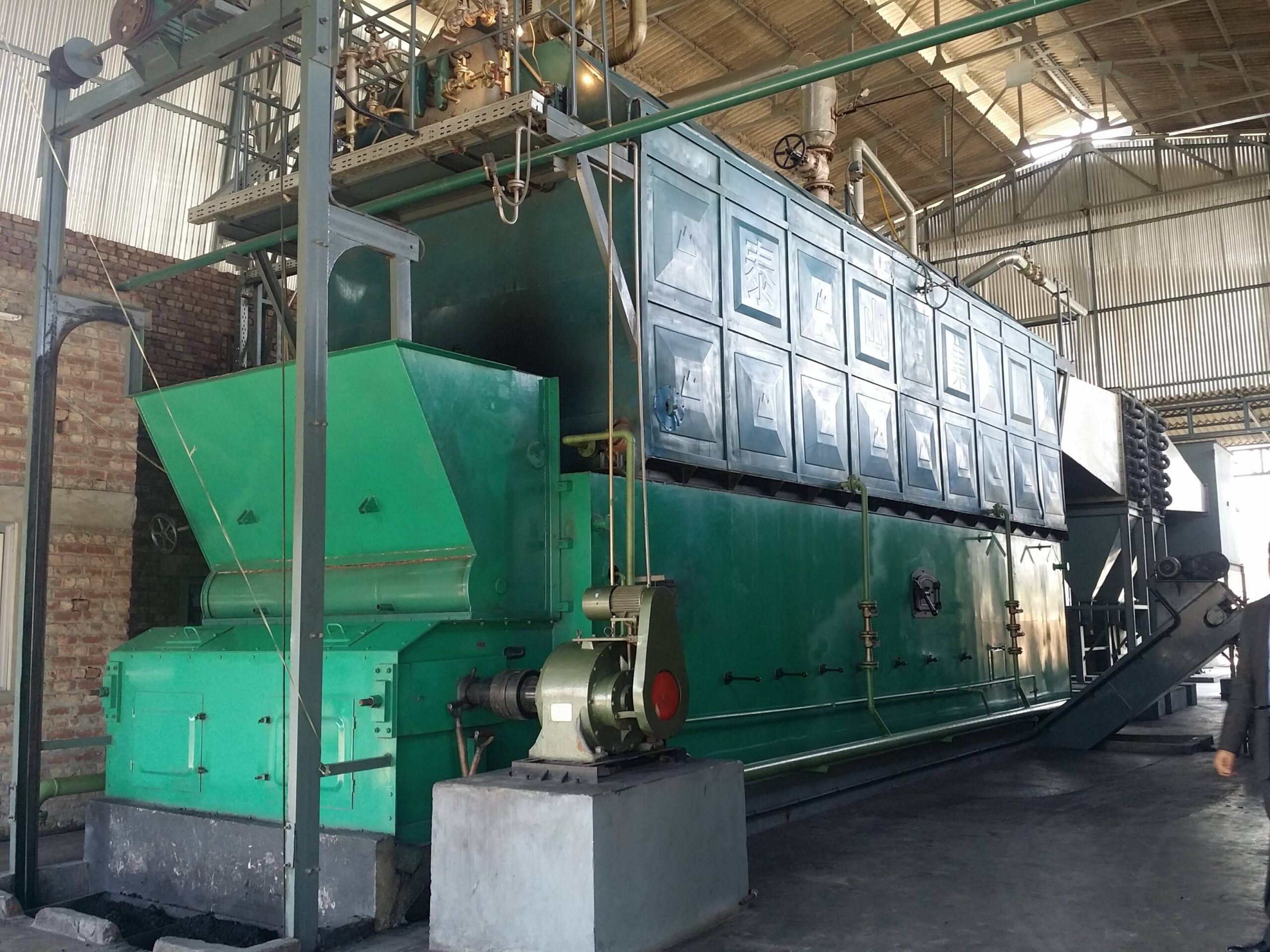
What Role Do Case Studies, Client References, and Project Track Records Play in Evaluating Industrial Coal-Fired Boiler Manufacturers?
Choosing the right industrial coal-fired boiler manufacturer is a high-stakes decision. The risk of selecting an underqualified or inexperienced vendor can result in performance failures, regulatory non-compliance, financial loss, or reputational damage. 🔍 While technical specifications and pricing matter, credible case studies, client references, and project track records provide the real-world assurance needed to make confident procurement choices. These indicators validate a manufacturer’s claims and help buyers distinguish between marketing promises and proven capabilities.
Case studies, client references, and project track records play a vital role in evaluating coal-fired boiler manufacturers by providing verifiable proof of past performance, technical execution, emissions compliance, and customer satisfaction. They allow prospective buyers to assess the manufacturer’s experience with similar boiler capacities, fuels, industry sectors, and environmental conditions—helping de-risk procurement and ensure successful outcomes.
Let’s examine how these elements contribute to informed decision-making and what to look for when requesting them.
Case studies and client references are optional for selecting a boiler manufacturer.False
They are essential for verifying a manufacturer’s ability to deliver on technical, environmental, and commercial project requirements.
🔍 Why Project Experience Matters in Industrial Coal Boilers
| Evaluation Factor | Importance |
|---|---|
| Boiler Output (TPH/MW) | Confirms experience with your plant’s size |
| Fuel Type | Shows adaptability to coal grade, ash %, sulfur content |
| Regulatory Compliance | Demonstrates success under local emissions limits |
| Industry Application | Validates boiler performance in your specific process (e.g., cement, textile, power) |
| Climate Adaptation | Shows durability in high-altitude, coastal, desert, or cold regions |
A case study showing a 50 TPH high-sulfur coal boiler operating in a cement plant in India under CPCB norms is far more relevant than a generic marketing brochure.
🔍 Key Elements of High-Quality Case Studies
| Component | Description |
|---|---|
| Client Name & Industry | Public or private sector? Utility, mining, textile? |
| Boiler Size & Type | TPH, design pressure, stoker or fluidized bed |
| Fuel Specification | Coal grade, ash %, moisture, heating value |
| Project Scope | Design, manufacture, installation, EPC, commissioning |
| Performance Metrics | Efficiency, NOx/SO₂/PM emissions, uptime % |
| Special Challenges | Unique site conditions, rapid timeline, regulatory hurdles |
| Outcome | Was performance guarantee met? Any extensions or change orders? |
Photographs, load curves, and commissioning certificates should support the story. 🔍 Without quantifiable data, it’s not a true case study—just a sales pitch.
🔍 The Power of Client References
Client references allow you to:
Speak directly with engineering managers, procurement heads, or project owners
Verify project quality, support responsiveness, and post-sale service
Understand how the manufacturer handled problems, variations, and audits
Always request at least 3 references that match your project in scale, region, or regulatory environment. Ask:
Did the boiler meet performance specs?
Was commissioning smooth and on schedule?
How has maintenance and reliability been?
Would you select the same vendor again?
If a vendor is reluctant to provide references, consider that a red flag 🚩.
Manufacturer Track Record: How to Evaluate It
| Metric | What to Check |
|---|---|
| Installations Completed | ≥100 industrial units, ≥20 coal-fired in last 10 years |
| Export Projects | Regional experience in Asia, EU, Africa, Latin America |
| Certifications Held | ASME, CE, ISO, PED, API, local licenses |
| Warranty Fulfillment | Track record on guarantee disputes |
| Repeat Clients | Strong signal of long-term trust |
Manufacturer track records are only relevant for large-scale power projects.False
Track records are critical for any industrial coal-fired boiler project, regardless of size, to ensure reliability, safety, and compliance.
🔍 Real-World Example: Case Study Summary Table
| Project | Location | Specs | Highlights |
|---|---|---|---|
| 60 TPH Stoker Boiler for Textile | Indonesia | Coal, 40 bar, 480°C | Met 90% boiler efficiency, NOx < 200 mg/Nm³, installed in 150 days |
| 35 TPH Fluidized Bed for Paper Mill | Turkey | Bituminous, 25 bar | Integrated ESP, baghouse, and SNCR—PM < 15 mg/Nm³ |
| 100 TPH Coal Boiler for Cement | India | High-ash coal, CPCB norms | 99.4% uptime over 2 years, 30% lower fuel cost vs legacy system |
Such tables help stakeholders instantly gauge capability alignment.
🔍 Documentation to Request from Manufacturers
Full project dossiers or summaries (PDF)
Performance test reports and site inspection logs
Emissions data reports certified by third parties
Commissioning timelines and issue resolution logs
Post-installation service logs (where available)
Client feedback letters or follow-up audit reports
Many of these documents also support regulatory approvals or public-private partnership evaluations.
Summary
When evaluating industrial coal-fired boiler manufacturers, documented case studies, credible client references, and robust project track records are not optional—they are mission-critical. They provide real-world evidence that a vendor can meet your performance, compliance, and service requirements under actual operating conditions. Verified experience de-risks the project and gives you confidence that your investment will yield reliable, efficient, and compliant boiler operation for decades. Always demand the data, ask the right questions, and let results—not claims—guide your decision.
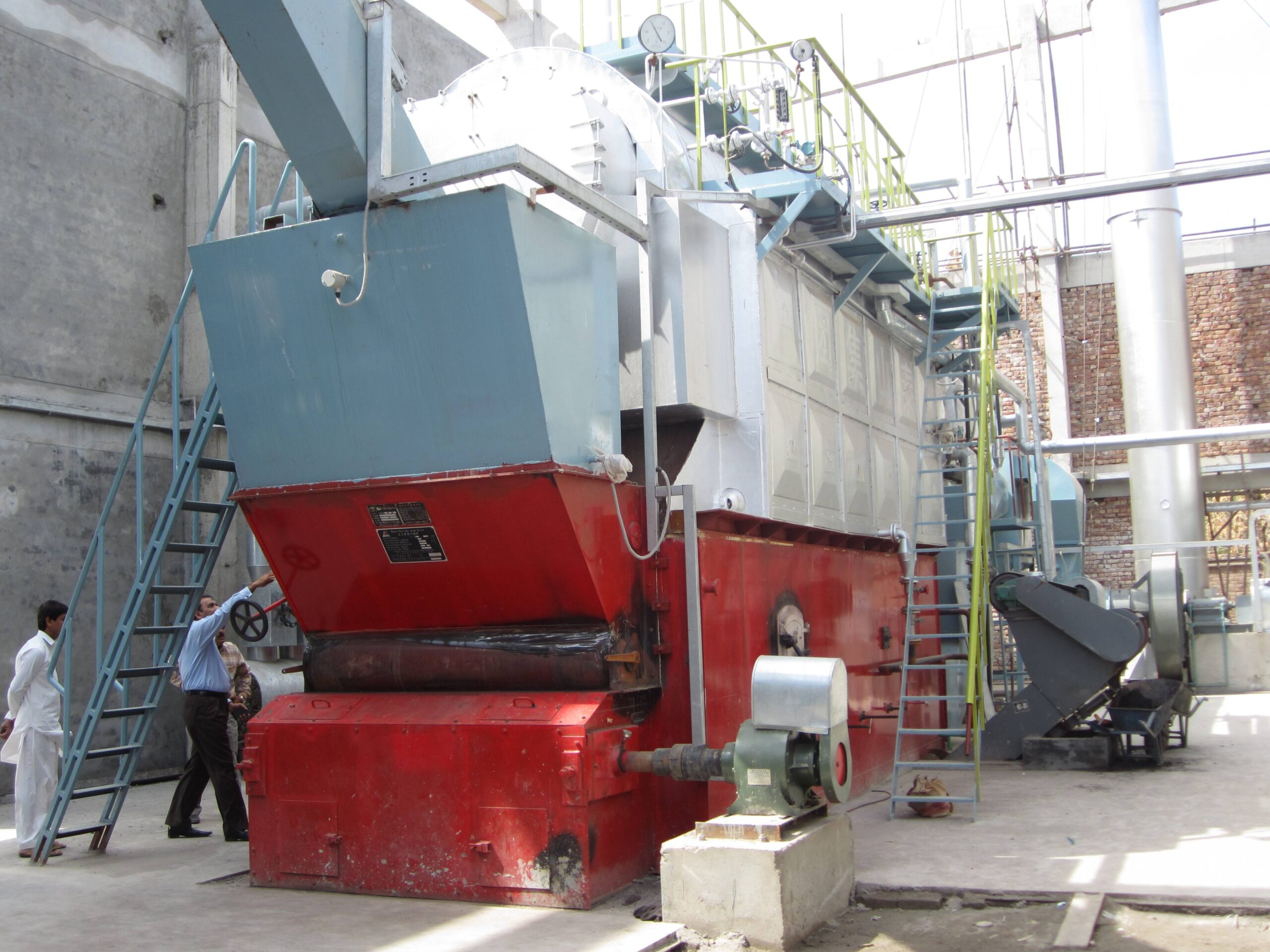
How Important Are Customization Capabilities, Fuel Compatibility, and Engineering Support?
Industrial coal-fired boiler applications rarely follow a one-size-fits-all approach. From varying coal grades and ash content to space limitations and emission constraints, each project poses unique technical challenges. 🔍 In this context, the manufacturer’s ability to provide customized boiler design, ensure multi-fuel compatibility, and deliver comprehensive engineering support becomes pivotal. Generic or standardized solutions often fail to achieve efficiency targets, emissions compliance, or long-term reliability. This article highlights the indispensable role of these capabilities in modern boiler procurement and system integration.
Customization, fuel compatibility, and engineering support are critical in industrial coal-fired boiler projects because they ensure the boiler system aligns with site-specific fuels, load profiles, environmental standards, and operational conditions. A capable manufacturer must tailor design parameters—including furnace sizing, combustion technology, and material selection—based on fuel properties and performance expectations, while providing engineering support throughout design, installation, and commissioning. These factors collectively determine operational efficiency, emissions control, uptime, and lifecycle cost.
Before finalizing a manufacturer, buyers must assess whether the supplier can truly customize—not just assemble—a boiler system optimized for their needs.
Fuel compatibility is not necessary when designing industrial coal-fired boilers.False
Fuel compatibility is essential to ensure combustion efficiency, ash handling, emissions control, and equipment longevity.
🔍 Why Customization Is Non-Negotiable in Coal-Fired Boilers
Each industrial site presents unique requirements:
| Variable | Why Customization Is Needed |
|---|---|
| Steam demand profile | Load variability affects furnace and drum sizing |
| Available footprint | Site constraints demand tailor-made layouts |
| Coal properties | Ash content, sulfur, moisture, volatile matter affect design |
| Emission limits | Region-specific NOx, SO₂, PM limits require specific controls |
| Integration with existing systems | Boilers may need to fit legacy piping, fuel supply, or control systems |
Standard designs often miss these targets, leading to derating, increased fuel use, or emissions violations.
Key Customization Areas in Boiler Design
| Component | Customization Focus |
|---|---|
| Furnace Volume | Tuned to coal type for flame stability and burnout time |
| Air Preheater & Fans | Matched to site-specific back pressure and altitude |
| Drum & Superheater Sizing | Sized for load variations and ramp-up behavior |
| Water Walls & Insulation | Designed for regional temperature and heat losses |
| Ash Handling System | Dry or wet based on coal ash properties |
🔍 Manufacturers must perform design iterations using thermal modeling, CFD simulations, and stress analysis tools.
Fuel Compatibility: Multi-Fuel Design for Operational Flexibility
Modern coal boilers must accommodate:
Lignite, sub-bituminous, bituminous, anthracite
Petroleum coke blends
Biomass/coal co-firing
Washed, high-moisture, or high-ash fuels
| Design Feature | Role in Fuel Compatibility |
|---|---|
| Fluidized bed combustion (FBC) | Handles wide fuel spectrum, especially low-grade coal |
| Sloped stoker grates | Allow partial biomass blending |
| Adjustable air staging | Optimizes burn for variable volatiles |
| Fuel feed controls | Accommodate moisture and density changes |
| Modular burner assemblies | Enable future fuel transitions |
Multi-fuel designs can reduce fuel risk and improve boiler flexibility.True
Boilers capable of handling multiple fuels offer operational flexibility, reduce dependency on single suppliers, and allow for greener co-firing.
🔍 Real-World Case: Multi-Fuel Custom Boiler System
A cement plant in Vietnam required a 75 TPH boiler to burn 60% local anthracite, 20% wood chips, and 20% imported bituminous coal. The manufacturer customized:
A fluidized bed combustion system with bed ash cooling
Triple-fuel feeding system
High-chloride material selection
Custom CEMS integration for mixed-fuel compliance
Result: 93% combustion efficiency, SO₂ < 120 mg/Nm³, and 7.8-year payback with fuel flexibility.
Engineering Support: Beyond the Boiler Supply
| Stage | Support Needed |
|---|---|
| Feasibility Study | Fuel testing, emissions modeling, layout planning |
| Design Phase | CAD/3D models, duct routing, foundation loads |
| Procurement & Fabrication | Material selection, QA plans, welding procedures |
| Installation | Erection drawings, supervision, mechanical alignment |
| Commissioning | First fire, steam blowing, tuning, training |
Engineers must collaborate with the plant team to solve integration challenges and align utility interfaces, automation systems, and auxiliary equipment.
🔍 Signs of a Manufacturer with Strong Customization & Support
| Indicator | What to Look For |
|---|---|
| Design team on staff | Thermal, mechanical, electrical engineers |
| Fuel testing lab access | Ability to analyze user coal for design matching |
| 3D modeling portfolio | BIM or CAD examples showing detailed layouts |
| Onsite service teams | Startup engineers and commissioning experts |
| Post-sale documentation | O&M manuals, spare parts catalogs, training guides |
A strong supplier provides not just drawings, but engineering presence throughout the project.
Summary
In the world of industrial coal-fired boilers, customization capabilities, fuel compatibility, and robust engineering support are not optional—they’re the cornerstone of project success. Each plant’s fuels, emissions constraints, layout, and operating conditions require a tailored approach. Manufacturers that offer deep technical design, multi-fuel engineering, and lifecycle support deliver higher efficiency, regulatory compliance, and long-term reliability. When selecting a vendor, don’t just compare specifications—evaluate their capacity to engineer for your reality.
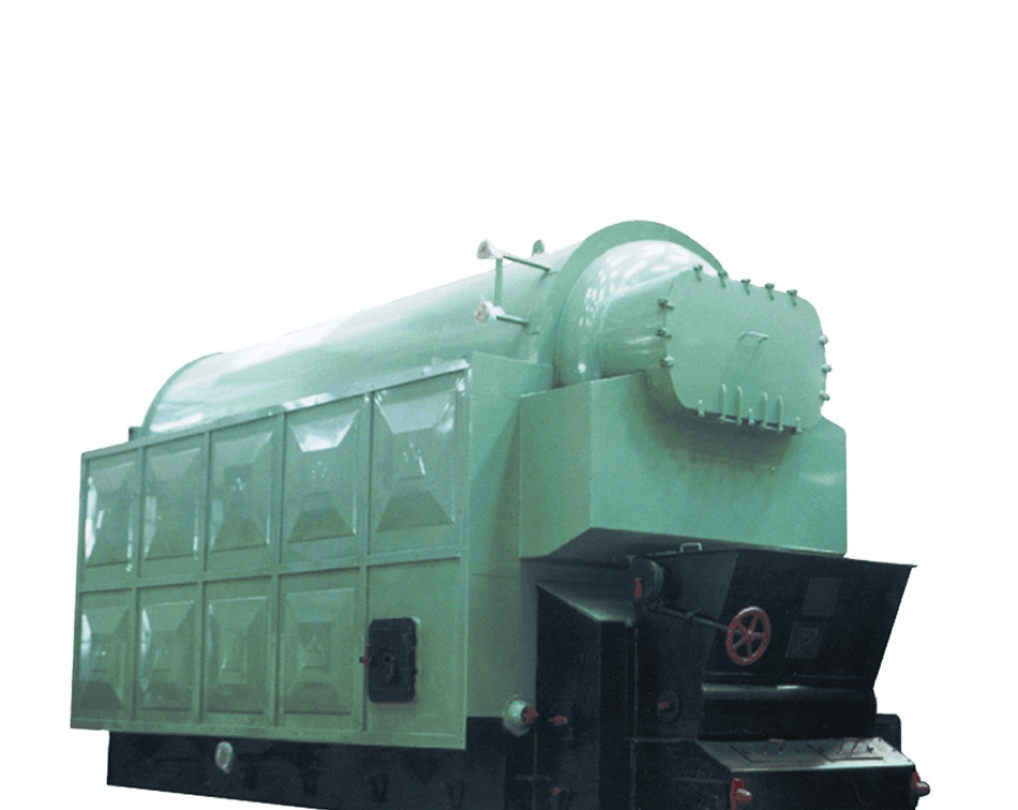
What Should Be Included in a Manufacturer’s Service Package, Warranty, and Performance Guarantee?
Choosing an industrial coal-fired boiler is not just about hardware—it’s about partnership. The real value of a manufacturer lies in what follows after delivery: the service package, warranty, and performance guarantees. 🔍 Without comprehensive post-sale support, even the best-designed boiler can fall short on uptime, safety, or emissions compliance. These contractual components protect the buyer’s investment, ensure long-term reliability, and hold manufacturers accountable to their technical claims. This article details what a complete and reliable manufacturer’s commitment should include.
A manufacturer’s service package for industrial coal-fired boilers should include preventive maintenance, spare parts support, emergency response, remote monitoring, and operator training. The warranty must cover pressure parts, refractory, and critical auxiliaries for at least 12–24 months, while the performance guarantee must define steam output, efficiency, fuel consumption, emissions limits, and uptime—with penalties for noncompliance. These elements ensure long-term performance, minimize operational risks, and provide legal and technical assurance.
Let’s break down the key inclusions and protections to demand in your next boiler contract.
Boiler warranties do not cover emissions compliance or fuel consumption.False
Performance guarantees often include emissions limits, efficiency targets, and fuel consumption benchmarks, especially in industrial coal boiler contracts.
🔍 What a Service Package Should Include
| Service Component | Description |
|---|---|
| Preventive Maintenance (PM) | Regular inspections, cleaning, and tuning scheduled monthly or quarterly |
| Emergency Breakdown Support | 24/7 availability for urgent issues, with defined response times (e.g., 24–72 hrs) |
| Spare Parts Inventory | OEM parts list, recommended stocking plan, fast delivery program |
| Remote Monitoring & Diagnostics | Integration with SCADA/PLC systems, alarm triggers, remote support access |
| Operator Training & Manuals | Onsite or remote training, safety procedures, troubleshooting guides |
Best-in-class suppliers offer multi-year service contracts with escalation options, lifecycle cost modeling, and O&M outsourcing plans.
Warranty Coverage in Coal-Fired Boilers 🔍
| Warranty Item | Typical Duration | Inclusions |
|---|---|---|
| Pressure Parts | 18–24 months | Drums, headers, water walls, tubes |
| Non-Pressure Parts | 12–18 months | Economizer, ducting, casings |
| Auxiliary Equipment | Varies (usually 12 months) | Fans, pumps, blowers, instrumentation |
| Refractory & Insulation | 6–12 months | Firebrick, castables, ceramic fiber |
| Control System Components | 12–18 months | DCS/PLC hardware, sensors |
Look for defect liability terms and clarification on exclusions, such as operator error, poor water treatment, or third-party parts.
Industrial coal-fired boiler warranties generally exclude pressure parts from coverage.False
Pressure parts are one of the most critical elements covered under standard industrial coal-fired boiler warranties.
🔍 Key Elements of a Performance Guarantee
A robust performance guarantee (PG) must specify:
| Guarantee Clause | What It Should Include |
|---|---|
| Steam Output | ±2% or better of rated TPH (tons per hour) |
| Fuel Consumption | Guaranteed coal consumption per ton of steam (e.g., ≤1.1 kg/kg steam) |
| Thermal Efficiency | ≥82% gross, higher for FBC/condensing types |
| Emissions Compliance | NOx, SO₂, PM within statutory limits |
| Uptime Guarantee | ≥95% over rolling 12-month period |
| Turn-Up/Turn-Down Ratio | ≥3:1 for load variation |
| Start-Up Time | Max time from cold start to full load (e.g., ≤6 hrs) |
Ensure the PG includes measurement protocols (ISO, ASME PTC, local norms), third-party witnessing, and clearly defined penalties if metrics are missed.
Case Study: 50 TPH Boiler Contract Guarantee
A chemical plant in South Africa signed a contract with these inclusions:
Output Guarantee: 50 TPH ±2%
Fuel Type: South African RB2 coal
Efficiency Guarantee: ≥84% at 100% MCR
SO₂ Emissions: <150 mg/Nm³ (with semi-dry FGD)
Downtime Allowance: ≤5 days/year unplanned
Warranty Duration: 18 months post-commissioning
Service Visits: Every 3 months + emergency within 48 hrs
This clarity in deliverables and consequences allowed the plant to meet production, emissions, and maintenance KPIs with confidence.
🔍 Manufacturer Obligations: Documentation to Demand
| Document | Purpose |
|---|---|
| Service Level Agreement (SLA) | Defines scope, frequency, and KPIs of maintenance services |
| Warranty Certificate | Legal coverage of boiler systems and auxiliary components |
| Performance Guarantee Sheet | Lists test conditions, baseline metrics, and penalty clauses |
| Commissioning Report | Confirms initial compliance before PG clock starts |
| Spare Parts List | Consumables, wear components, critical spares with lead times |
| Training Logs & Certificates | Confirms operator readiness and legal compliance |
Boiler performance guarantees only apply during the warranty period.False
Performance guarantees often extend beyond warranty, typically covering the first year of full operation post-commissioning.
Summary
For industrial coal-fired boilers, a manufacturer’s service package, warranty, and performance guarantee form the backbone of post-sale value. Together, they determine not just how well the boiler performs on Day 1—but how reliably and cost-effectively it operates for decades. A comprehensive offering includes maintenance protocols, emissions and fuel guarantees, uptime expectations, and risk coverage for defects. Smart buyers insist on full transparency, contractual clarity, and performance accountability—backed by enforceable documentation and proven support infrastructure. Don’t just buy a boiler. Secure the commitment that comes with it.
🔍 Conclusion
Choosing the right industrial coal-fired boiler manufacturer is crucial to achieving safe, efficient, and regulation-compliant operation. A reliable manufacturer should provide more than just a product—they should offer a complete solution that includes technical support, emissions control strategies, and lifecycle cost optimization. Taking the time to vet your supplier ensures your investment is secure and aligned with your performance goals.
📞 Contact Us
💡 Looking for a trusted coal-fired boiler manufacturer? We provide engineered solutions, compliance consulting, and project support for industrial coal boiler systems worldwide.
🔹 Partner with a manufacturer that delivers reliability, compliance, and performance—every time. 🏭🪨✅
FAQ
What certifications should a reliable coal-fired boiler manufacturer have?
A trustworthy manufacturer should meet recognized industry standards, such as:
ASME (Boiler & Pressure Vessel Code)
ISO 9001 / ISO 14001
CE certification (for export markets)
API or UL approvals, if applicable
These ensure the manufacturer follows quality, safety, and environmental protocols.
Why does experience and industry reputation matter?
Look for manufacturers with:
20+ years in industrial boiler design
A strong portfolio of installations across mining, cement, chemical, and power sectors
Positive case studies and testimonials
Proven experience with coal types used in your region
Experience ensures engineering competence and operational reliability.
What design features indicate a high-quality coal-fired boiler?
Key indicators of quality include:
High thermal efficiency (≥80%)
Advanced combustion control systems
Support for emissions controls (e.g., FGD, ESP, SCR)
Robust refractory lining and ash handling systems
Customizable furnace sizes and fuel flexibility
What after-sales support should be expected?
Reliable manufacturers provide:
Startup and commissioning services
Technical support and training
Long-term spare parts availability
Maintenance contracts or performance monitoring
Global presence or regional service agents are a major plus.
How can you evaluate a manufacturer’s reliability before purchase?
Request a site visit or virtual factory tour
Ask for performance guarantees and test reports
Review past project data, including fuel consumption and emissions
Examine their customer list and repeat orders from major industries
Verify insurance, warranty terms, and financial stability
References
ASME Boiler Certification and Manufacturer Directory – https://www.asme.org
ISO Certified Boiler Manufacturer Listings – https://www.iso.org
EPA Coal Boiler Emissions Guidelines – https://www.epa.gov
Boiler Selection Guide – DOE Industrial Technologies Program – https://www.energy.gov
Performance Case Studies for Coal-Fired Boilers – https://www.researchgate.net
IEA Reports on Coal Boiler Technology and Trends – https://www.iea.org
Boiler Operation and Maintenance Standards – https://www.mdpi.com
Third-Party Reviews and Buyer Feedback – https://www.trustpilot.com
Industrial Boiler Tender and Procurement Guidelines – https://www.automation.com
Boiler Vendor Comparison Tools – https://www.energystar.gov

